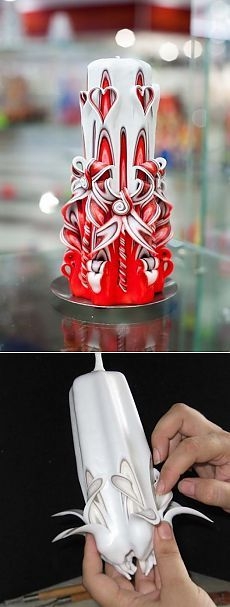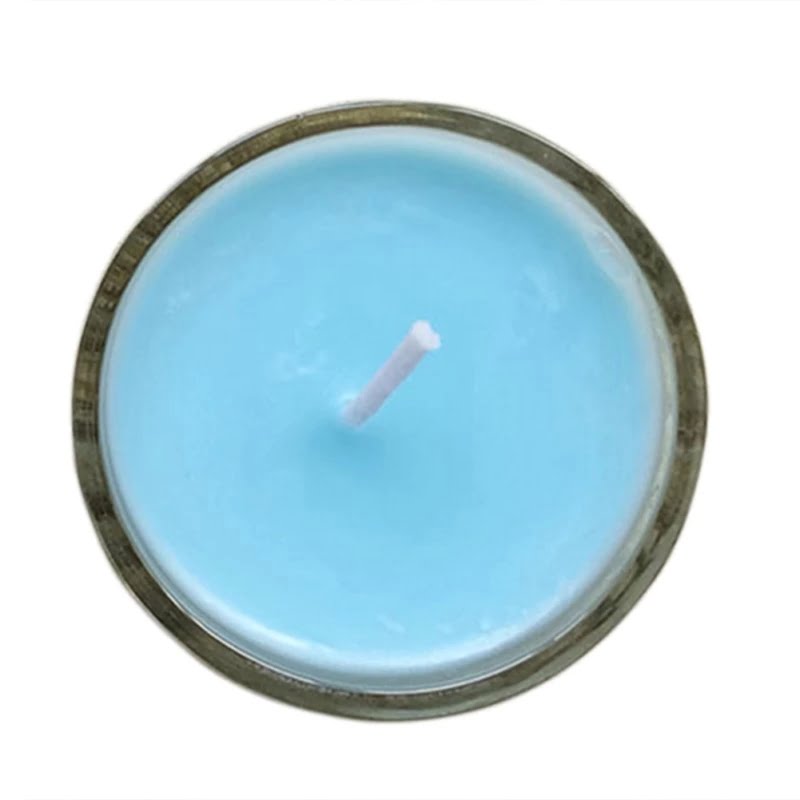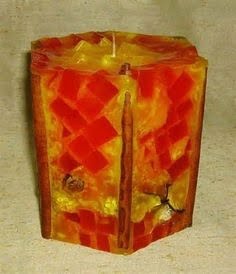Are you looking to enhance your candle making skills? Understanding the role of wax crystals is essential for achieving high-quality candles. In this article, we will explore the basics of wax crystals for candle making and how they impact the overall quality and fragrance of your creations. Whether you’re a beginner or an experienced candle maker, delving into the science behind wax crystals can elevate your craft to new heights.
When it comes to creating beautiful and long-lasting candles, the formation of wax crystals plays a crucial role. These microscopic structures are responsible for the texture, burn time, and scent throw of your candles.
By understanding the science behind wax crystals, you’ll be able to make informed decisions about the types of waxes and additives to use in your candle making process. From selecting the best materials to implementing effective techniques, mastering wax crystals is the key to producing exceptional candles.
In this comprehensive guide, we will delve into different types of wax crystals and their impact on candle making. We’ll also discuss how to identify the best wax crystals for your specific needs and explore techniques for creating and monitoring them throughout the candle making process. Additionally, we’ll provide valuable tips for avoiding common issues with wax crystals, ensuring a successful and rewarding experience in crafting beautiful candles that showcase the beauty and versatility of wax crystals.
Understanding the Science Behind Wax Crystals
When it comes to candle making, understanding the science behind wax crystals is crucial in ensuring the quality of the final product. Wax crystals play a significant role in determining the burn time, fragrance release, and overall performance of a candle. In this section, we will delve deeper into the impact of wax crystals on candle quality and explore how different types of wax crystals can affect the end result.
Formation of Wax Crystals
Wax crystals are formed when the liquid wax cools and solidifies. The size, shape, and structure of these crystals can vary depending on factors such as the type of wax used, cooling rate, and additives incorporated during the candle making process. Understanding how these variables influence crystal formation is essential for achieving desired characteristics in a finished candle.
Impact on Burn Time and Fragrance Release
The presence of wax crystals can significantly impact burn time and fragrance release in candles. Larger and more uniformly distributed crystals tend to create a stronger capillary network within the candle, leading to a slower burn rate and improved scent throw. On the other hand, smaller or irregularly shaped crystals may result in faster burning and less efficient diffusion of fragrance oils.
Choosing the Right Wax Crystals for Your Candles
Different types of wax, such as paraffin, soy, beeswax, and palm wax, produce distinct crystal structures when solidified. Candle makers must carefully consider their specific needs and preferences when selecting a wax type based on its crystalline properties. By understanding how each type of wax crystal affects candle quality, artisans can make informed choices that align with their desired outcomes.
By gaining insight into the science behind wax crystals and how they impact candle quality, crafters can enhance their skills in creating exceptional candles with optimal burning performance and fragrance diffusion. Experimenting with various techniques for controlling crystal formation allows for greater flexibility in producing unique candles tailored to individual preferences.
Different Types of Wax Crystals
When it comes to candle making, the type of wax crystals used can greatly impact the quality and performance of the finished product. There are several different types of wax crystals that are commonly used in candle making, each with its own unique characteristics and benefits. Understanding the differences between these types of wax crystals is essential for identifying the best option for your specific candle making needs.
Some common types of wax crystals used in candle making include:
- Paraffin Wax Crystals: Paraffin wax crystals are a popular choice for candle making due to their affordability and ability to hold a high fragrance load. They also have a smooth and shiny finish when solidified, making them ideal for creating candles with a polished appearance.
- Soy Wax Crystals: Soy wax crystals are derived from soybean oil and are known for their clean-burning properties. They have a natural and sustainable origin, making them a popular choice for eco-conscious candle makers. Soy wax also has a lower melting point, which can result in a longer-lasting candle.
- Beeswax Crystals: Beeswax crystals are produced by honeybees and have natural sweet scent that can enhance the fragrance of scented candles. They have a high melting point, which makes them an excellent choice for creating dripless candles with a longer burn time.
It’s important to consider the specific characteristics and benefits of each type of wax crystal when deciding which one is best suited for your candle making needs. Factors such as cost, fragrance retention, burn time, and sustainability should all be taken into account when selecting the right wax crystals for your candles.
In addition to these traditional options, there are also newer types of wax crystals on the market, such as coconut wax or palm wax, each with its own unique set of qualities. By understanding the different types of wax crystals available and their individual properties, you can make an informed decision about which will work best for your specific candle making projects.
Understanding the different types of wax crystals available will enable you to choose wisely based on factors like cost and sustainability while ensuring that you deliver high-quality products to your customers or loved ones who receive them as gifts. For example:
- Parraffin Wax – Most common but not very environmentally friendly
- Soy Wax – Earth-friendly but often doesn’t retain fragrances well
In summary, there are many factors involved in choosing what kind of wax crystal will work best for you including cost-effectiveness environmental considerations as well how strong scent retention it provides among others.
The Role of Wax Crystals in Scented Candles
Enhancing Fragrance With Wax Crystals
When it comes to creating scented candles, the role of wax crystals is crucial in enhancing the fragrance and longevity of the scent. The size and structure of the wax crystals can impact how the fragrance oils are dispersed throughout the candle as it burns.
Smaller wax crystals allow for a more even distribution of the scent, resulting in a more consistent and pleasant aroma. On the other hand, larger wax crystals may trap the fragrance oils, leading to uneven scent dispersion and a shorter lifespan for the fragrance.
Longevity of Scent
In addition to dispersing the fragrance evenly, the formation of wax crystals also plays a role in extending the longevity of the scent in a candle. The crystalline structure created during the cooling process can act as a reservoir for holding onto the fragrance oils.
This helps slow down evaporation and ensures that the scent continues to release gradually as the candle burns. As a result, candles made with carefully cultivated wax crystals can provide a longer-lasting sensory experience for those enjoying their aroma.
Wax Crystal Selection for Scented Candles
When creating scented candles, it’s essential to select an appropriate type of wax that promotes the formation of ideal wax crystals for enhancing fragrance and longevity. For example, soy wax is known for its ability to produce fine and consistent wax crystals, making it an excellent choice for scented candles.
Beeswax is another popular option due to its natural aroma-enhancing properties and its tendency to form stable crystalline structures. By understanding how different types of waxes contribute to wax crystal formation, candle makers can choose the best option for creating long-lasting, fragrant candles.
Techniques for Creating and Monitoring Wax Crystals in Candle Making
When it comes to candle making, understanding the techniques for creating and monitoring wax crystals is essential in producing high-quality candles. Whether you are a novice or experienced chandler, mastering this aspect of the process is crucial for achieving the desired results. Here are some techniques to consider when working with wax crystals for candle making:
- Slow Cooling: One effective technique for creating desirable wax crystals is to allow the wax to cool slowly. This gradual cooling process encourages the formation of smaller, more uniform crystals, resulting in a smoother and more even burn.
- Temperature Control: Monitoring and maintaining the temperature during the cooling process is also key in creating ideal wax crystals. A consistent and controlled temperature helps promote the growth of well-defined crystals, which contributes to the overall quality of the candle.
- Stirring Method: Employing proper stirring techniques while the wax is cooling can influence the formation of wax crystals. Gentle and consistent stirring can help distribute the crystalline structure evenly throughout the wax, leading to a more visually appealing and efficient burning candle.
In addition to these techniques, monitoring the development of wax crystals is equally important in ensuring a successful outcome. Regularly assessing the appearance and texture of the cooling wax allows for adjustments to be made if necessary, ultimately contributing to a superior finished product.
Whether you prefer container candles, pillar candles, or votives, understanding how to create and monitor wax crystals will have a significant impact on your candle making endeavors. By implementing these techniques and closely observing the formation of wax crystals, you can elevate your craft and produce candles that burn evenly, emit fragrance effectively, and boast a visually appealing appearance.
Avoiding Common Issues With Wax Crystals
When making candles, the formation of wax crystals is an essential factor to consider in order to achieve the desired quality of the finished product. However, there are common issues that can arise during the process, which may affect the outcome of the candles. By understanding these potential problems and learning how to avoid them, you can ensure a successful candle making experience.
One common issue when working with wax crystals for candle making is poor adhesion. This occurs when the wax does not properly adhere to the container, resulting in an uneven or rough surface on the candle. To avoid this issue, it’s important to preheat the containers before pouring the wax and ensure that they are clean and free from any moisture. Additionally, choosing a wax blend specifically formulated for container candles can help improve adhesion.
Another issue that can arise with wax crystals is frosting, which appears as a white haze on the surface of the finished candle. Frosting is caused by temperature variations during cooling and can be especially common in natural waxes such as soy or beeswax. To minimize frosting, it’s recommended to pour your candles at the proper temperature and store them in a consistent environment while they cool.
Additionally, tunneling can occur when a candle burns down its center, leaving wax along the sides of the container. This issue is often caused by using a wick that is too small for the diameter of the container or by not allowing enough time for a full melt pool to form during each burn cycle. Selecting an appropriate wick size and ensuring proper burning practices can help prevent tunneling and maximize the lifespan of your candles.
| Common Issues | Avoidance Tips |
|---|---|
| Poor Adhesion | Preheat containers before pouring wax; Choose specific wax blend for container candles |
| Frosting | Pour candles at proper temperature; Store candles in consistent environment while cooling |
| Tunneling | Select appropriate wick size; Ensure proper burning practices for full melt pool |
Utilizing Wax Crystals for Unique Candle Designs and Textures
When it comes to creating unique and eye-catching candles, utilizing wax crystals can be a game changer. Wax crystals play a crucial role in not only the structural integrity of a candle but also in its overall aesthetic appeal. By understanding how to harness the power of wax crystals, candle makers can achieve a wide range of textures and designs that set their creations apart from the rest.
One of the most popular methods for creating unique candle designs with wax crystals is through the process of “frosting.” Frosting occurs when small, feathery crystals form on the surface of a candle, creating an elegant and rustic appearance.
This effect is achieved by controlling the cooling process of the wax, allowing these crystals to manifest naturally. It’s important to note that not all waxes are capable of producing this desired frosting effect, so selecting the right type of wax is essential.
In addition to frosting, candle makers can also experiment with different techniques for incorporating wax crystals directly into the wax mixture. By strategically adding and manipulating these crystals during the pouring and cooling stages, artisans can create stunning visual effects such as marbling, layering, and even three-dimensional patterns within their candles. This level of creativity allows for endless possibilities in terms of design and texture, making each candle truly one-of-a-kind.
| Wax Crystal Technique | Description |
|---|---|
| Frosting | Controlled cooling process creates feathery crystals on surface |
| Incorporating into Wax Mixture | Adding and manipulating crystals during pouring for visual effects |
Final Thoughts
In conclusion, embracing the beauty and versatility of wax crystals in candle making opens up a world of possibilities for creating high-quality, unique candles. Understanding the science behind wax crystals and their impact on candle quality is essential for anyone looking to delve into the art of candle making. By identifying the different types of wax crystals and learning how to create and monitor them, candle makers can enhance the fragrance, longevity, and texture of their creations.
Furthermore, utilizing wax crystals in scented candles can lead to a more immersive sensory experience for consumers. The ability to enhance fragrance and create unique designs and textures allows for endless creativity in candle making. Whether it’s through traditional techniques or innovative methods, wax crystals offer an array of options for candle makers to explore and experiment with.
By avoiding common issues with wax crystals and following tips for a successful candle making experience, individuals can truly unlock the potential of these natural formations. As the popularity of handcrafted candles continues to grow, understanding how to leverage wax crystals for unique designs and textures will set apart enthusiasts and professionals alike in the candle making industry.
In essence, embracing the beauty and versatility of wax crystals is not only a nod to tradition but also an exciting avenue for creative expression in the modern craft of candle making.
Frequently Asked Questions
What Crystals Can Be Used in Candles?
Crystals that can be used in candles include quartz, amethyst, rose quartz, citrine, and clear quartz. These crystals can enhance the energy and intention of the candles when they are burned.
How Do You Make Candles With Wax Crystals?
To make candles with wax crystals, first melt the candle wax in a double boiler. Once melted, add the desired amount of wax crystals to the liquid wax and stir until fully incorporated. Then pour the wax into prepared candle containers and allow it to cool and harden.
Is It Safe to Add Crystals to Candles?
It is generally safe to add crystals to candles as long as certain precautions are taken. It’s important to ensure that the size of the crystal is appropriate for the size of the candle container, as larger crystals can pose a fire hazard.
Additionally, always monitor the candle while burning to prevent any safety issues related to the crystals being present in the candle.

Welcome to my candle making blog! In this blog, I will be sharing my tips and tricks for making candles. I will also be sharing some of my favorite recipes.





